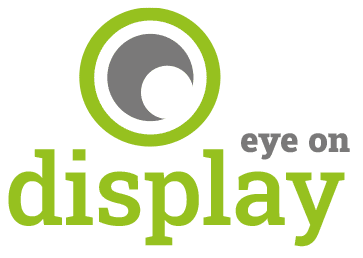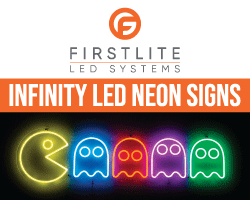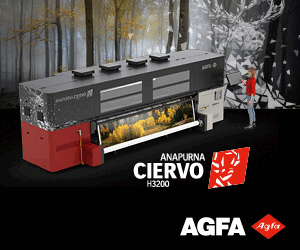
There is no understating the impact that the pandemic had on the sign and display markets. Thankfully, both sectors are now well on the road to recovery, but there are still certain challenges that remain for sign-makers and other companies in the industry.
The pandemic changed the way almost everyone works, not just within the sign and print sectors, but also further afield. Whether this was simply the way we hold meetings, with many now taking place over a Zoom or Teams call rather than in-person, or how we access certain items in the supply chain, adapting the way that your business operates is critical to long-term success.
Tim Carter, Commercial Print Sales Director at Ricoh Graphic Communications, recently sat down with ISA-UK CEO Craig Brown to discuss the sign industry’s future as part of Ricoh’s ‘Anything in Print’ podcast series.
Working together
Titled ‘A Sign of Things to Come’, the session took place shortly after the Sign & Digital UK 2023 event, where a host of new trends were very much the topic of discussion for both visitors and exhibitors at the NEC.
ISA-UK oversaw the ‘SDUK Explains Lounge’ at the exhibition, where more than 30 speakers took part in sessions covering some of the key talking points in the industry at present.
Among some of the core takeaways highlighted here, as well as wider afield across the show floor, was the willingness for manufacturers and suppliers to work together to develop solutions that will support sign and display companies in the long run and allow them to grow their businesses by taking on a wider range of work.
“It seemed that suppliers are much happier to work together and acknowledge that their machine didn’t do everything that the customer wanted, and that you might have two or three different brands to work together,” Craig Brown said.
“I haven’t really seen that before because previously if you went for a particular supplier, then that was the total focus. Whereas now, there seems to be much more openness about how people would work together, and what happens when you are using various supply chains.”
Make a community
This collaborative approach carries over from manufacturers and suppliers working together, to the actual sign businesses themselves supporting each other in order to drive growth across the industry. Being a part of a specialist trade group like ISA-UK will not only put you in touch with other companies in the market, but also grant access to a wide range of resources that could help you progress.
“I’d like to think we are there to try and help the industry,” Craig said. “I don’t think we often get recognised for what we do. I would say we represent around 300 members in total, and some of the bigger sign members in the fraternity, but I think the industry can become a bit blasé.
“I’d love as a trade association to have manufacturers coming to me to tell me where they think the next trends will be and why they’re investing in this particular print technology, because it starts a discussion. And if that discussion is headed by someone from a specific supplier, then the person reading would probably go and ask them first. There’s a benefit for the manufacturer to give us the information as well.
“Let’s make it a community; we listen to what you want, but we need our members to contribute as well.”
To find out more about what sign-makers can do to succeed in the future, the trends and market changes we can expect, and how ISA-UK can support your business, click here to listen to the podcast in full.




















